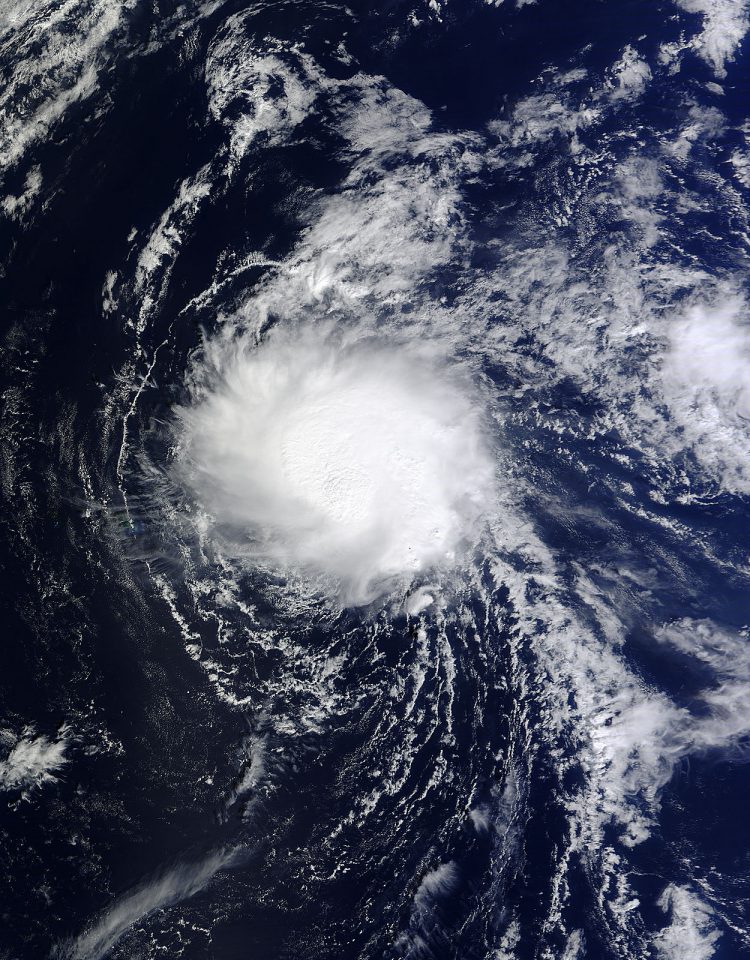NASA's Terra Satellite Shows a More Organized Tropical Storm Ana

NASA's Terra satellite passed over Tropical Storm Ana on Oct. 22 at 22:10 UTC (6:10 p.m. EDT) and saw that wind shear had relaxed. Image Credit: NASA Goddard MODIS Rapid Response Team
Ana appeared more rounded on imagery from NASA's Terra satellite as thunderstorms again circled the low-level center.
NASA's Terra satellite passed over Ana on Oct. 22 at 22:10 UTC (6:10 p.m. EDT). The MODIS instrument aboard Terra captured a visible image of the storm that showed clouds and showers were no longer being blown northeast of the center from southwesterly wind shear, as they had in the last couple of days.
The wind shear has weakened, which allowing for the showers and thunderstorms to redevelop around the center of the storm.
On Oct. 24, Ana was strengthening and moving northwest while crossing the northwest Hawaiian Islands east of Maro Reef.
A Tropical Storm Warning is in effect for portions of the Papahanaumokuakea Marine National Monument, from French Frigate Shoals to Lisianski.
At 8 a.m. (2 a.m. HST/1200 UTC) the center of Tropical Storm Ana was located near latitude 26.0 north and longitude 168.6 west. Ana was moving toward the northwest near 12 mph (19 kph) and this motion is expected to become more northerly through early Friday, then northeasterly through early Saturday, Oct. 25. Maximum sustained winds were near 50 mph (80 kph).
NOAA's Central Pacific Hurricane Center expects Ana to continue strengthening through early Saturday.
Rob Gutro
NASA's Goddard Space Flight Center
Media Contact
All latest news from the category: Earth Sciences
Earth Sciences (also referred to as Geosciences), which deals with basic issues surrounding our planet, plays a vital role in the area of energy and raw materials supply.
Earth Sciences comprises subjects such as geology, geography, geological informatics, paleontology, mineralogy, petrography, crystallography, geophysics, geodesy, glaciology, cartography, photogrammetry, meteorology and seismology, early-warning systems, earthquake research and polar research.
Newest articles

Bringing bio-inspired robots to life
Nebraska researcher Eric Markvicka gets NSF CAREER Award to pursue manufacture of novel materials for soft robotics and stretchable electronics. Engineers are increasingly eager to develop robots that mimic the…

Bella moths use poison to attract mates
Scientists are closer to finding out how. Pyrrolizidine alkaloids are as bitter and toxic as they are hard to pronounce. They’re produced by several different types of plants and are…

AI tool creates ‘synthetic’ images of cells
…for enhanced microscopy analysis. Observing individual cells through microscopes can reveal a range of important cell biological phenomena that frequently play a role in human diseases, but the process of…





















